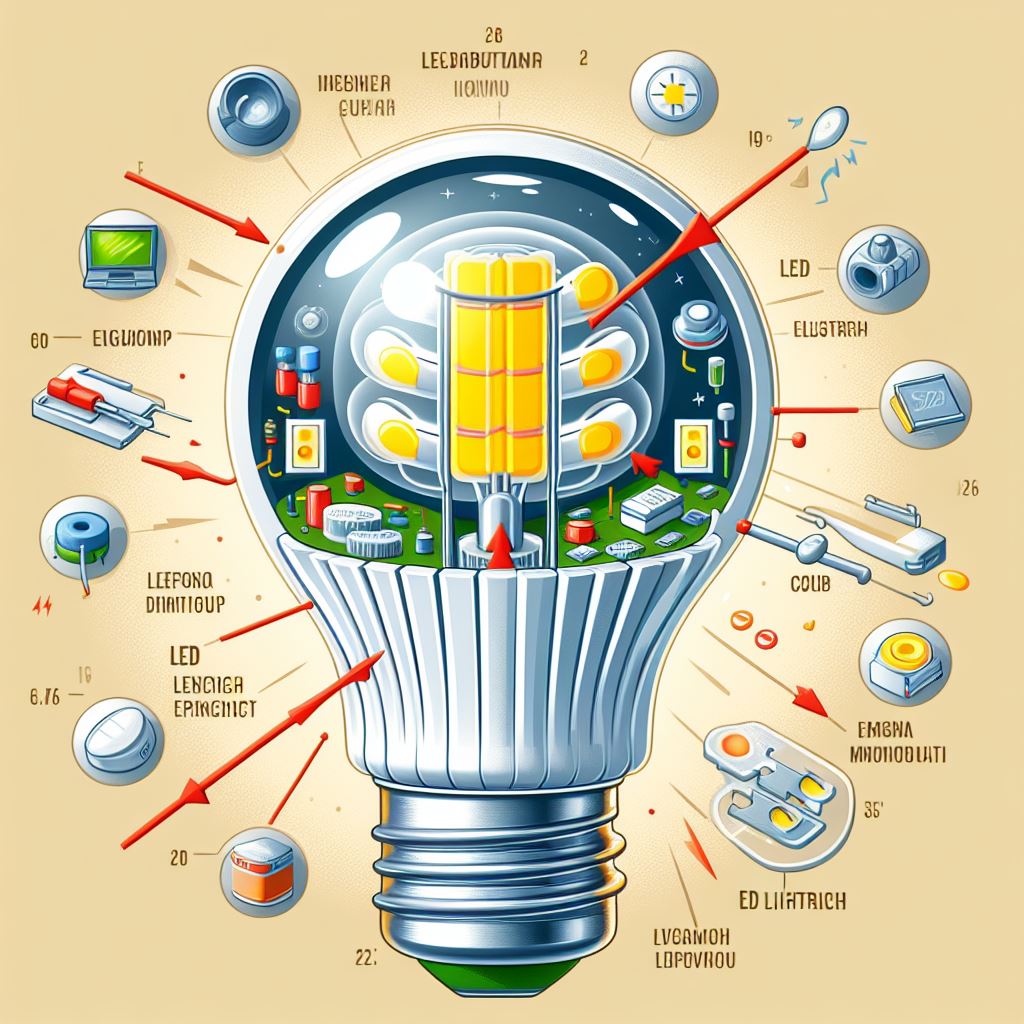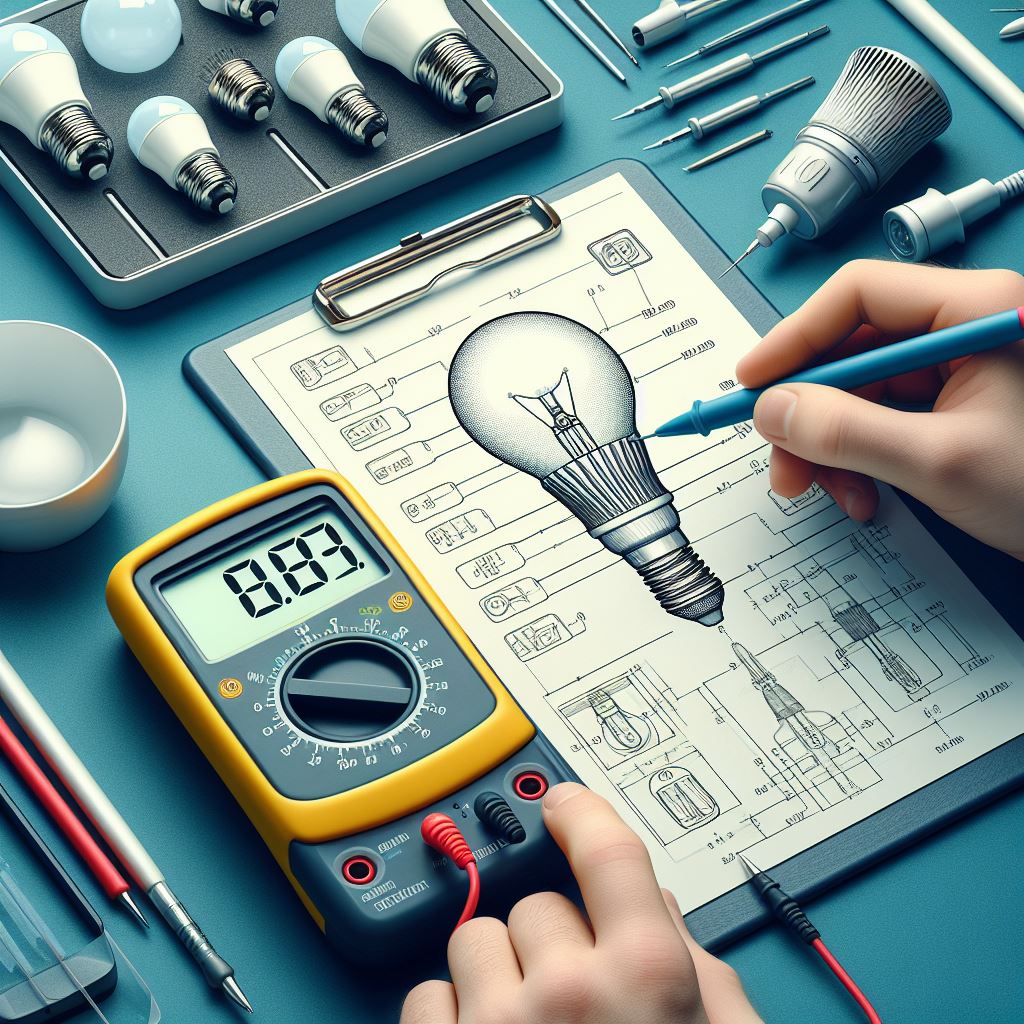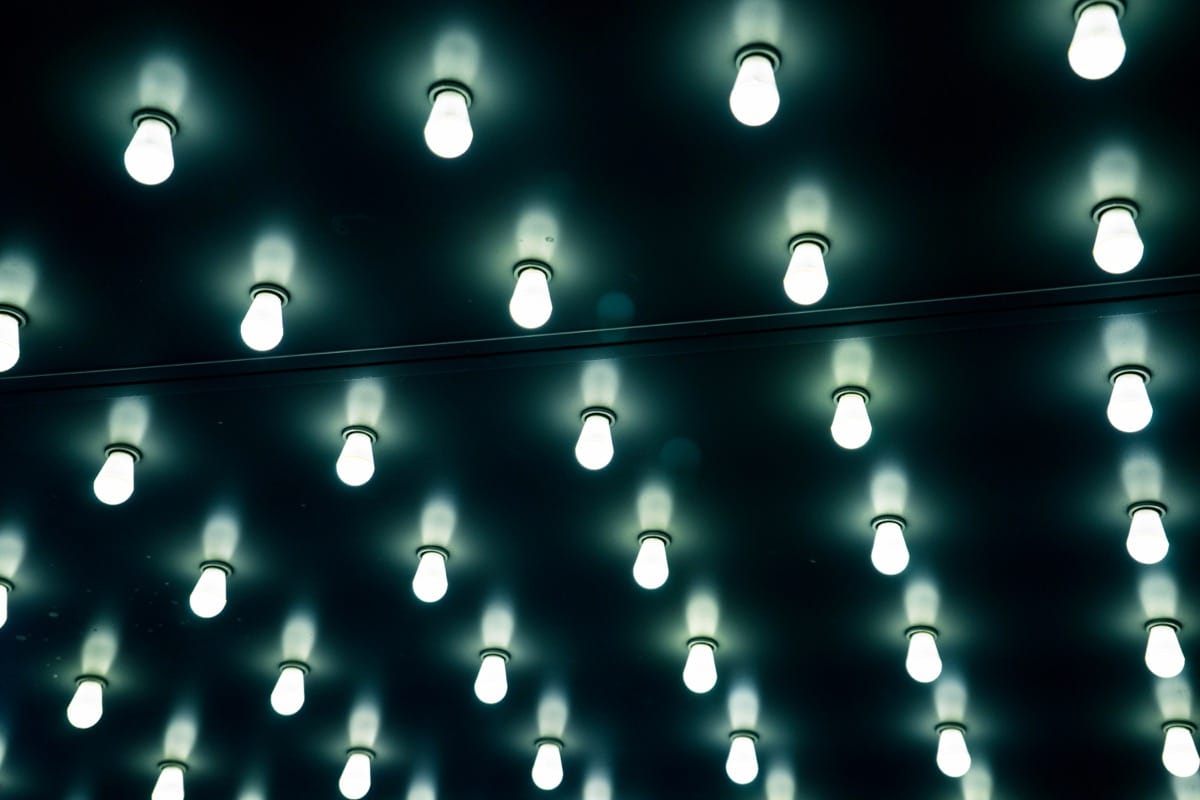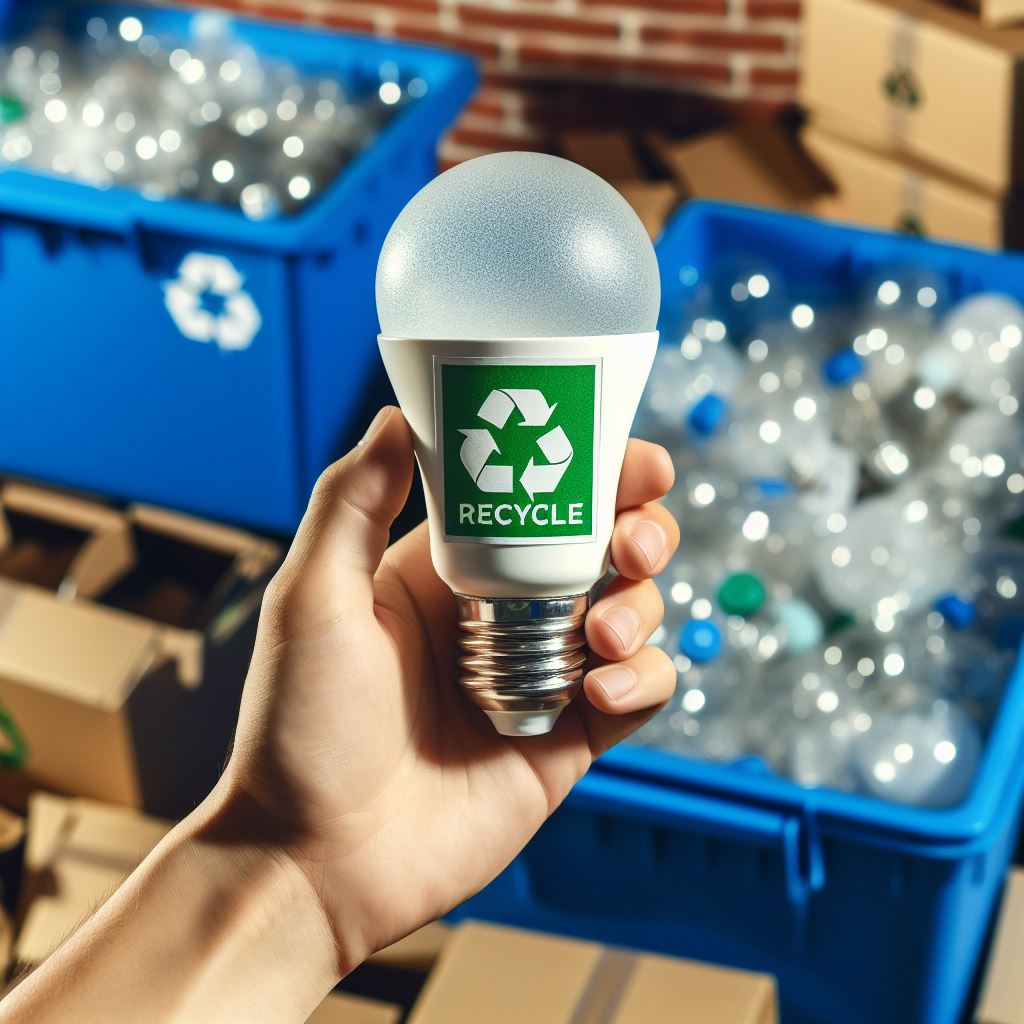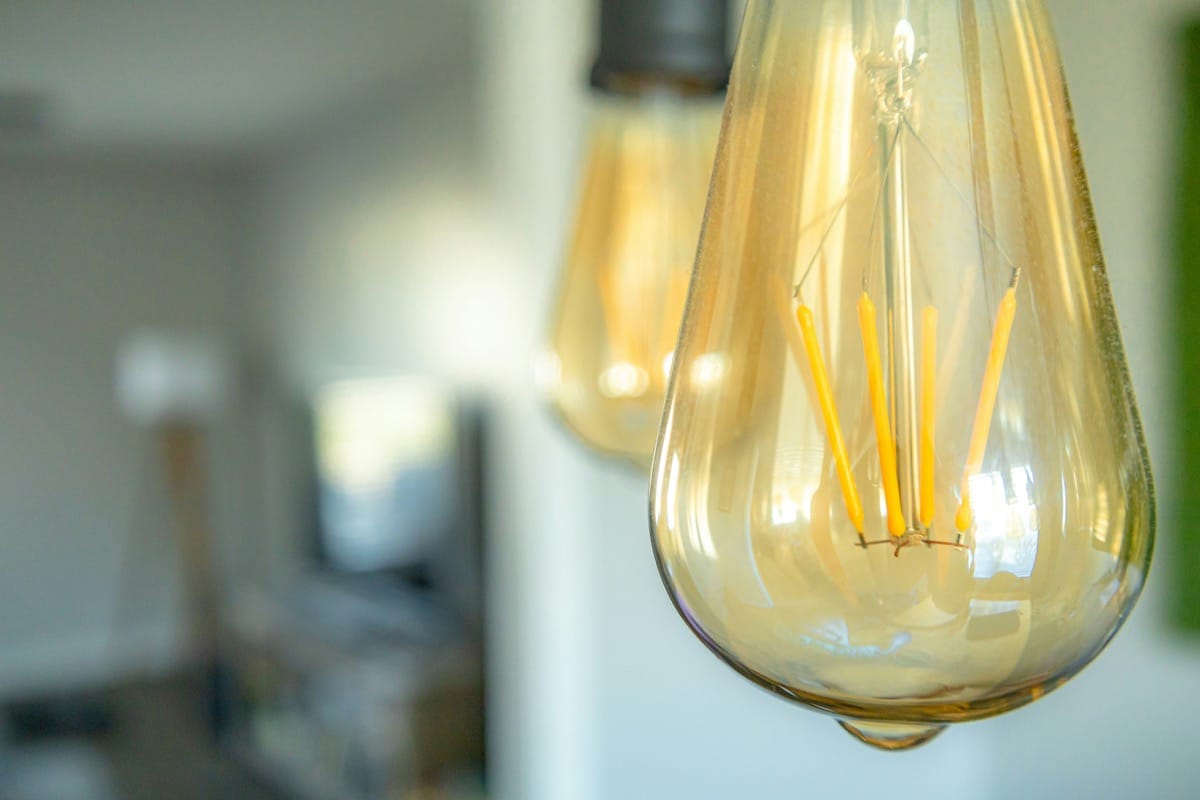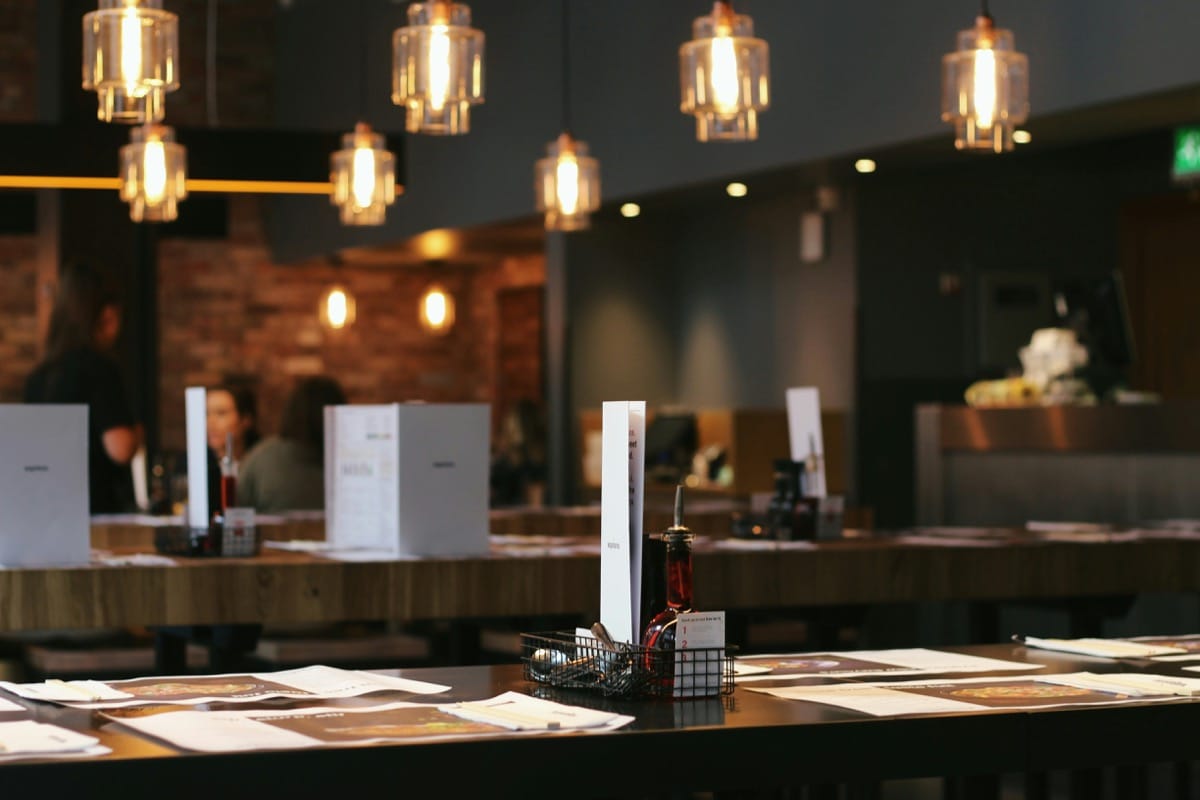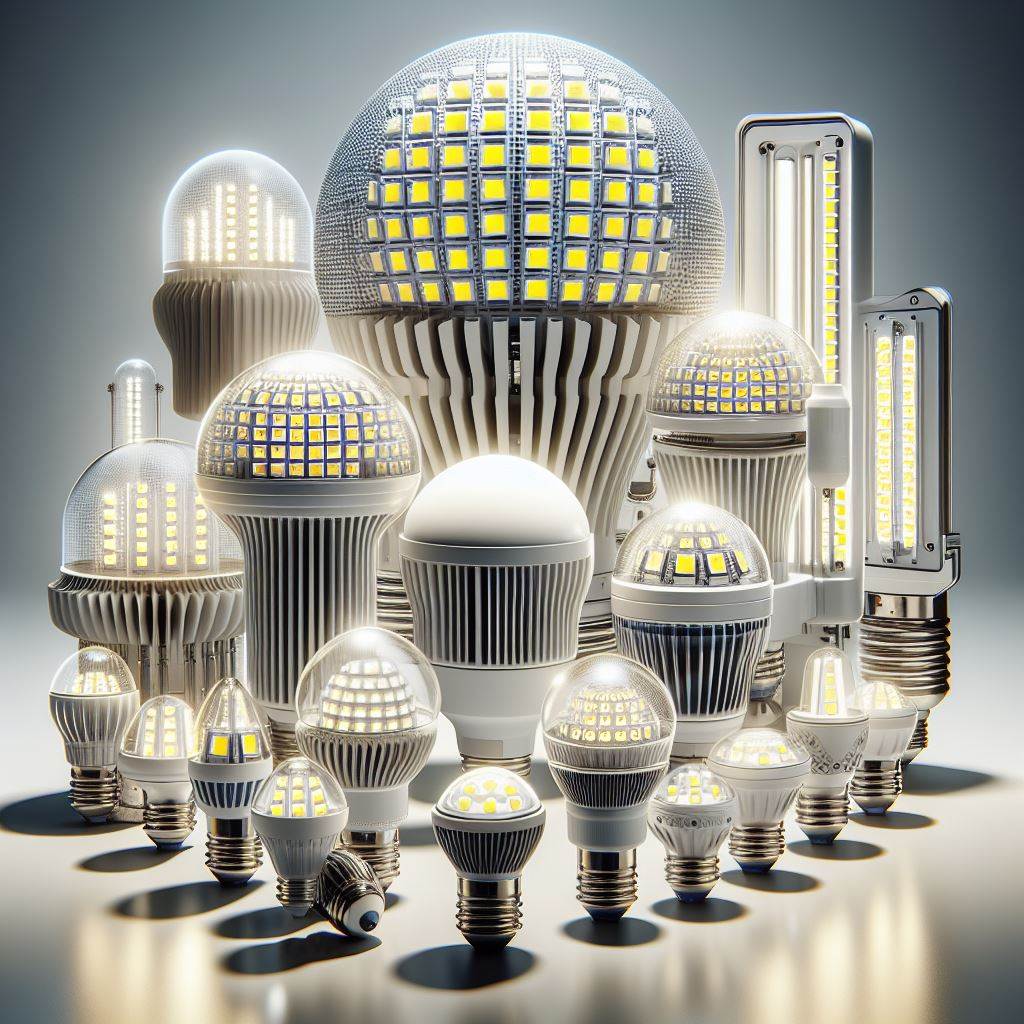In the world of lighting, LED technology has paved the way for energy-efficient, long-lasting illumination with its innovative design and functionality. Understanding how LED light bulbs work can shed light on their superiority over traditional lighting options. As an expert in the field, allow me to guide you through the intricate workings of LED light bulbs, unraveling the science behind their brilliance.
LED, or Light Emitting Diode, bulbs operate by converting electrical energy into light through the movement of electrons in a semiconductor material. Unlike incandescent bulbs that rely on heating a filament to produce light, LEDs generate minimal heat, making them highly energy-efficient and durable. With their ability to produce various colors and brightness levels, LED light bulbs have revolutionized the way we illuminate our spaces, offering a sustainable and cost-effective lighting solution.
Join me on this enlightening journey as we delve into the intricacies of LED technology, exploring the mechanisms that make these bulbs the preferred choice for modern lighting applications. Let’s unravel the magic of LED light bulbs and discover the science behind their brilliance.
Understanding the Basics of LED Light Bulbs
So, you’re curious about how LED light bulbs work, huh? Well, let’s shed some light on the subject! LEDs are pretty fascinating little gadgets that have revolutionized the way we think about lighting. Here’s a breakdown of the magical inner workings of these energy-efficient gems.
The Science Behind LED Technology
Unlike traditional incandescent bulbs that require a filament to heat up and produce light, LEDs function through a process called electroluminescence. This means that when an electric current passes through semiconducting material in the diode, it emits photons, creating light.
Components of an LED Light Bulb
An LED bulb consists of various components working harmoniously together:
- Electrical contacts
- LED chips
- Heat sink
- Optical lens
How Energy Conversion Happens in LED Bulbs
LEDs are energy-efficient because they convert electricity into light with minimal heat production. The semiconductor material within the diode efficiently converts electrons into photons, making LEDs cooler to the touch compared to incandescent bulbs.
Why LED Light Bulbs Are Energy-Efficient
LEDs use 75% less energy and last 25 times longer than incandescent bulbs. Their energy efficiency not only reduces electricity bills but also lowers carbon emissions, helping save the environment while brightening your space.
And there you have it! A simple breakdown of how LED light bulbs work. The next time you flick on those energy-efficient LEDs, think about the magic happening inside that tiny bulb!
The Science Behind LED Technology
Curious about how LED light bulbs work? Let’s delve into the fascinating world of LED technology! LEDs are changing the way we illuminate our world, offering a more energy-efficient and long-lasting lighting solution.
A Closer Look at LED Technology
LEDs, or Light-Emitting Diodes, are tiny semiconductor devices that convert electrical energy into light. But how exactly does this process happen? Here’s a simplified breakdown:
– When electricity passes through the semiconductor material in an LED, it excites the electrons within the material.
– These energized electrons release photons, which are the light particles emitted by the LED.
– The color of the light produced depends on the specific materials used in the LED’s construction.
The Key Components of LED Light Bulbs
LED light bulbs consist of several crucial components that work together to produce light efficiently:
1. Semiconductor Chip: This is where the magic happens. The semiconductor chip is the heart of the LED, where electricity is converted into light.
2. Phosphor Coating: This coating helps to adjust the color temperature and improve the light quality emitted by the LED.
3. Heat Sink: LEDs generate minimal heat, but a heat sink helps to dissipate any excess heat to ensure the longevity of the bulb.
Understanding the Energy Conversion Process
Unlike traditional incandescent bulbs that waste a significant amount of energy as heat, LED light bulbs operate much more efficiently:
– LEDs convert around 95% of the electricity they consume into light, minimizing energy wastage.
– This efficiency not only reduces electricity bills but also contributes to a more sustainable environment.
Next time you flip the switch on your LED light bulb, remember the intricate science behind its operation. LEDs are not just sources of light; they represent a revolution in energy-efficient lighting technology.
Components of an LED Light Bulb
So, you’ve noticed the rise of LED light bulbs and are curious about how they work. Let’s dive into the nitty-gritty details of what makes these energy-efficient bulbs shine so brightly!
Light-Emitting Diode (LED)
An LED is a semiconductor device that emits light when an electric current passes through it. The magic happens in this tiny but powerful component.
Phosphor Coating
To achieve a warm or cool light color, manufacturers apply a phosphor coating to the LED. This coating helps create the desired ambiance in your living space.
Heat Sink
LEDs produce light by releasing energy, but they also generate heat. A heat sink helps dissipate this heat, ensuring the bulb stays cool and operates efficiently.
Driver
The driver is like the brain of an LED bulb. It regulates the power supply to the LED, ensuring a consistent flow of electricity and maintaining the bulb’s performance.
- Efficiency: LEDs convert almost all of the energy they consume into light, making them highly efficient.
- Durability: LED bulbs last significantly longer than traditional incandescent or fluorescent bulbs.
- Instant On: When you flip the switch, LEDs illuminate instantly without the need to warm up.
Understanding the components of an LED light bulb sheds light on why these bulbs are revolutionizing the lighting industry. With their energy efficiency, durability, and instant illumination, LEDs are more than just light sources—they are beacons of innovation and sustainability.
How Energy Conversion Happens in LED Bulbs
Let’s dive into the fascinating world of LED light bulbs and discover how they work their magic to illuminate our lives. Have you ever wondered how these tiny bulbs manage to shine so bright while being energy-efficient? Well, buckle up as we unravel the science behind the energy conversion in LED bulbs!
Understanding the Basics
LED, or Light Emitting Diode, bulbs operate on a unique principle different from traditional incandescent or fluorescent lighting. These bulbs don’t rely on heating a filament to produce light. Instead, they use semiconductor technology to convert electricity into light efficiently.
The Science Behind LED Technology
At the heart of an LED bulb are semiconductors that contain positively and negatively charged layers. When an electric current passes through these layers, it energizes the electrons, causing them to release photons – the light particles that we see as illumination.
Components of an LED Light Bulb
- LED Chip: The semiconductor that emits light when energized.
- Driver Circuit: Regulates the electricity flow to the LED chip.
- Heat Sink: Keeps the bulb cool to ensure longevity.
Why LED Light Bulbs Are Energy-Efficient
LED bulbs have a higher energy conversion efficiency compared to traditional bulbs because they produce very little heat, unlike incandescent bulbs that lose a significant portion of energy through heat emission. This efficiency translates to lower electricity bills and a reduced carbon footprint.
Pros and Cons of Using LED Light Bulbs
- Pros: Energy efficiency, long lifespan, diverse lighting options.
- Cons: Higher upfront cost, potential color temperature issues.
So, next time you flip that switch and bask in the warm glow of your LED bulb, remember the intricate dance of electrons and photons happening inside to create that radiant light! LED light bulbs not only brighten up our spaces but also symbolize a step towards a greener, more sustainable future.
Why LED Light Bulbs Are Energy-Efficient
Have you ever wondered why LED light bulbs work in a way that makes them so energy-efficient compared to traditional incandescent or fluorescent bulbs? Let’s delve into the science behind this incredible phenomenon.
Understanding the Basics of LED Light Bulbs
LED (light-emitting diode) bulbs generate light by passing an electrical current through a microchip, illuminating tiny light-emitting diodes. This process produces visible light without the need for excessive heat generation, making them highly efficient.
The Science Behind LED Technology
Unlike incandescent bulbs that rely on heating a filament to produce light, LEDs convert most of the energy they use into light rather than heat. This fundamental difference is what makes LEDs more energy-efficient.
Components of an LED Light Bulb
An LED bulb is composed of a semiconductor diode, a plastic lens, and an LED chip, all encased in a bulb housing. The material used for the semiconductor determines the color of the light produced by the LED.
How Energy Conversion Happens in LED Bulbs
When electricity passes through the semiconductor material in an LED, it stimulates the electrons, causing them to release photons. These photons then emit light, creating illumination in a highly efficient manner.
Why LED Light Bulbs Are Energy-Efficient
But what sets LED bulbs apart is their ability to produce more light per watt of energy consumed, making them up to 80% more efficient than traditional bulbs. This means they require less electricity to generate the same amount of light, resulting in substantial energy savings.
Despite initially costing more than traditional bulbs, the energy savings and long lifespan of LED bulbs make them a cost-effective choice in the long run. The LED technology is continually evolving to provide even more efficient and eco-friendly lighting solutions for homes and businesses alike.
Pros and Cons of Using LED Light Bulbs
LED light bulbs have revolutionized the way we illuminate our spaces, offering numerous benefits over traditional incandescent and fluorescent lighting solutions. While they are incredibly energy-efficient and eco-friendly, there are some drawbacks to consider before making the switch. Let’s delve into the pros and cons of using LED light bulbs work.
Pros:
- Energy Efficiency: LED bulbs use up to 80% less energy than traditional bulbs, leading to significant cost savings over time.
- Durability: LED bulbs are extremely durable and long-lasting, reducing the frequency of replacements.
- Environmentally Friendly: LED bulbs are free of toxic materials and are recyclable, reducing their impact on the environment.
- Instant Lighting: LED bulbs reach full brightness instantly, unlike CFLs which can take time to warm up.
Cons:
- Higher Initial Cost: LED bulbs have a higher upfront cost compared to traditional lighting options.
- Dimming Compatibility: Not all LED bulbs are compatible with dimmer switches, so it’s important to check before purchase.
- Heat Sensitivity: LED bulbs can be sensitive to heat, affecting their performance in hot environments.
Despite their drawbacks, LED light bulbs are a smart choice for those looking to save on energy bills and reduce their environmental footprint. With advancements in technology, LED bulbs continue to improve in efficiency and performance, making them a popular choice for residential and commercial lighting needs.
Comparing LED Bulbs to Other Lighting Options
When it comes to lighting options, the debate between LED light bulbs and traditional incandescent or fluorescent bulbs has been ongoing. Let’s dive into a comparison to see why LEDs stand out:
Longevity and Durability:
LED bulbs have a significantly longer lifespan compared to incandescent and fluorescent bulbs. While incandescent bulbs may last around 1,000 hours and fluorescents about 10,000 hours, LED bulbs can shine brightly for up to 50,000 hours.
Energy Efficiency:
LEDs consume much less energy than traditional bulbs, making them highly energy-efficient. They can convert almost all the energy they consume into light, whereas incandescent bulbs waste a lot of energy as heat.
Environmental Impact:
With their low energy consumption and longer lifespan, LED bulbs have a significantly lower environmental impact compared to other lighting options. This makes them a more sustainable choice for eco-conscious consumers.
Cost-effectiveness:
Although the initial cost of LED bulbs may be higher than incandescent bulbs, their long lifespan and energy efficiency result in lower electricity bills over time. In the long run, LED bulbs can save you money.
And when you factor in the various benefits like instantaneous illumination, better color options, and no UV emissions, LED light bulbs emerge as a clear winner in the lighting market.
Conclusion
LED light bulbs work by utilizing a semiconductor diode to convert electricity into light. This process differs from traditional incandescent bulbs, resulting in increased energy efficiency and longevity.
Through the use of specialized materials and technology, LED bulbs produce light by exciting electrons within the semiconductor, emitting photons in the form of visible light. This mechanism allows for greater control over color temperature, brightness, and directionality.
As technology continues to advance, LED light bulbs are becoming increasingly popular for their eco-friendly and cost-effective nature. By understanding how they work, you can make informed decisions when choosing lighting solutions for your home or business.
Upgrade to LED light bulbs today and experience the benefits of modern, efficient lighting that enhances your environment while reducing energy consumption.
Frequently Asked Questions (FAQs)
How do LED light bulbs work?
LED light bulbs work by using a semiconductor to convert electricity into light. When electricity is applied to the diode, it creates a phenomenon called electroluminescence, producing visible light.
What makes LED light bulbs more energy-efficient than traditional bulbs?
LED light bulbs are more energy-efficient because they produce light through a different process that generates significantly less heat. This means that a higher percentage of the electrical energy is converted into light, resulting in lower energy consumption.
Are LED light bulbs eco-friendly?
Yes, LED light bulbs are eco-friendly because they consume less energy, have a longer lifespan, and do not contain harmful substances such as mercury that are found in other types of bulbs.
Do LED light bulbs emit heat?
LED light bulbs produce significantly less heat than incandescent or halogen bulbs because their energy is used more efficiently to produce light rather than heat. This makes them safer to touch and reduces the risk of fire hazards.
Can LED light bulbs be dimmed?
Yes, many LED light bulbs are dimmable. However, it’s important to check the packaging or manufacturer’s specifications to ensure compatibility with your dimmer switch. Using a non-dimmable LED bulb with a dimmer switch can cause flickering or early bulb failure.
Are LED light bulbs more expensive than traditional bulbs?
Initially, LED light bulbs may have a higher upfront cost compared to traditional bulbs. However, they are more cost-effective in the long run due to their energy efficiency and longer lifespan, which leads to savings on electricity bills and replacement costs.

